Rohit Saha
LegalLens Shared Task 2024: Legal Violation Identification in Unstructured Text
Oct 15, 2024
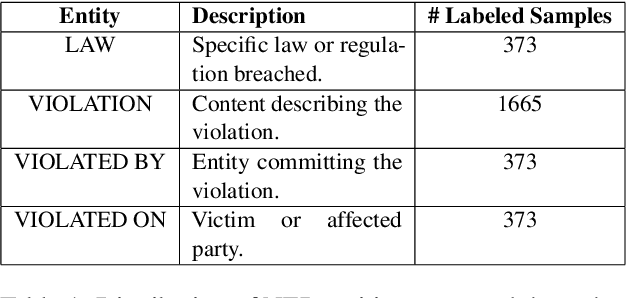
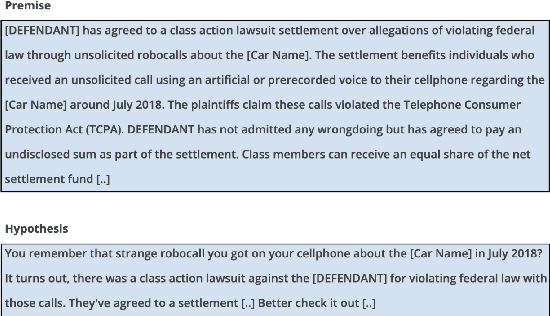
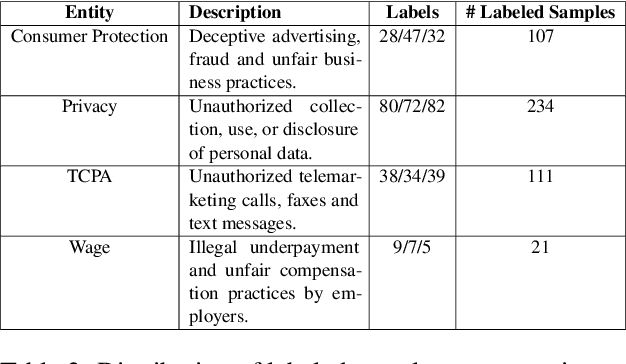
Abstract:This paper presents the results of the LegalLens Shared Task, focusing on detecting legal violations within text in the wild across two sub-tasks: LegalLens-NER for identifying legal violation entities and LegalLens-NLI for associating these violations with relevant legal contexts and affected individuals. Using an enhanced LegalLens dataset covering labor, privacy, and consumer protection domains, 38 teams participated in the task. Our analysis reveals that while a mix of approaches was used, the top-performing teams in both tasks consistently relied on fine-tuning pre-trained language models, outperforming legal-specific models and few-shot methods. The top-performing team achieved a 7.11% improvement in NER over the baseline, while NLI saw a more marginal improvement of 5.7%. Despite these gains, the complexity of legal texts leaves room for further advancements.
LegalLens: Leveraging LLMs for Legal Violation Identification in Unstructured Text
Feb 06, 2024Abstract:In this study, we focus on two main tasks, the first for detecting legal violations within unstructured textual data, and the second for associating these violations with potentially affected individuals. We constructed two datasets using Large Language Models (LLMs) which were subsequently validated by domain expert annotators. Both tasks were designed specifically for the context of class-action cases. The experimental design incorporated fine-tuning models from the BERT family and open-source LLMs, and conducting few-shot experiments using closed-source LLMs. Our results, with an F1-score of 62.69\% (violation identification) and 81.02\% (associating victims), show that our datasets and setups can be used for both tasks. Finally, we publicly release the datasets and the code used for the experiments in order to advance further research in the area of legal natural language processing (NLP).
AutoFraudNet: A Multimodal Network to Detect Fraud in the Auto Insurance Industry
Jan 15, 2023Abstract:In the insurance industry detecting fraudulent claims is a critical task with a significant financial impact. A common strategy to identify fraudulent claims is looking for inconsistencies in the supporting evidence. However, this is a laborious and cognitively heavy task for human experts as insurance claims typically come with a plethora of data from different modalities (e.g. images, text and metadata). To overcome this challenge, the research community has focused on multimodal machine learning frameworks that can efficiently reason through multiple data sources. Despite recent advances in multimodal learning, these frameworks still suffer from (i) challenges of joint-training caused by the different characteristics of different modalities and (ii) overfitting tendencies due to high model complexity. In this work, we address these challenges by introducing a multimodal reasoning framework, AutoFraudNet (Automobile Insurance Fraud Detection Network), for detecting fraudulent auto-insurance claims. AutoFraudNet utilizes a cascaded slow fusion framework and state-of-the-art fusion block, BLOCK Tucker, to alleviate the challenges of joint-training. Furthermore, it incorporates a light-weight architectural design along with additional losses to prevent overfitting. Through extensive experiments conducted on a real-world dataset, we demonstrate: (i) the merits of multimodal approaches, when compared to unimodal and bimodal methods, and (ii) the effectiveness of AutoFraudNet in fusing various modalities to boost performance (over 3\% in PR AUC).
GaLeNet: Multimodal Learning for Disaster Prediction, Management and Relief
Jun 18, 2022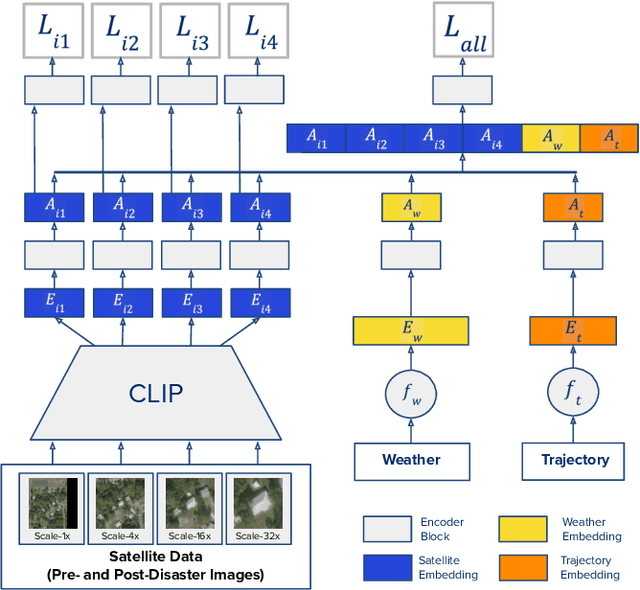
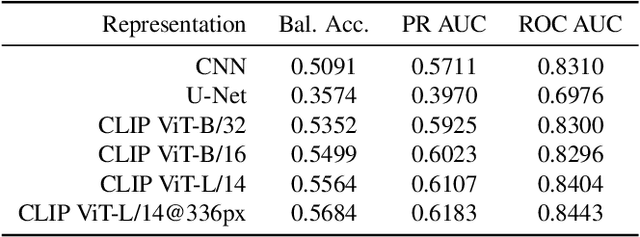

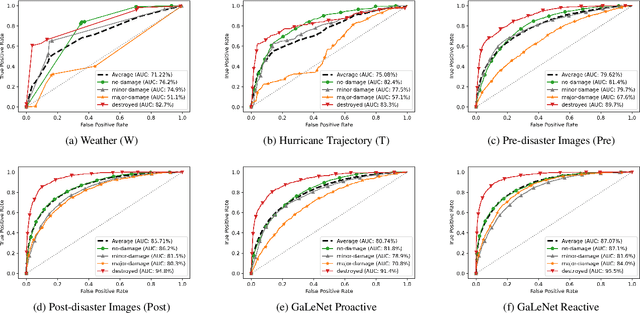
Abstract:After a natural disaster, such as a hurricane, millions are left in need of emergency assistance. To allocate resources optimally, human planners need to accurately analyze data that can flow in large volumes from several sources. This motivates the development of multimodal machine learning frameworks that can integrate multiple data sources and leverage them efficiently. To date, the research community has mainly focused on unimodal reasoning to provide granular assessments of the damage. Moreover, previous studies mostly rely on post-disaster images, which may take several days to become available. In this work, we propose a multimodal framework (GaLeNet) for assessing the severity of damage by complementing pre-disaster images with weather data and the trajectory of the hurricane. Through extensive experiments on data from two hurricanes, we demonstrate (i) the merits of multimodal approaches compared to unimodal methods, and (ii) the effectiveness of GaLeNet at fusing various modalities. Furthermore, we show that GaLeNet can leverage pre-disaster images in the absence of post-disaster images, preventing substantial delays in decision making.
LOHO: Latent Optimization of Hairstyles via Orthogonalization
Mar 10, 2021
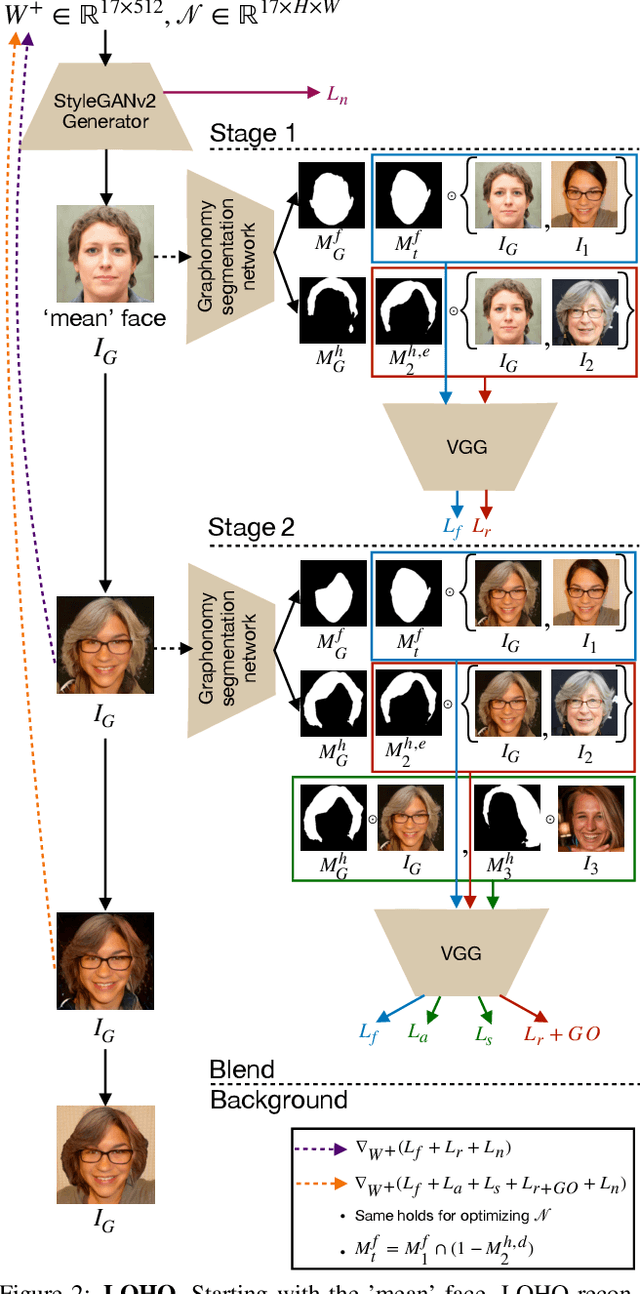

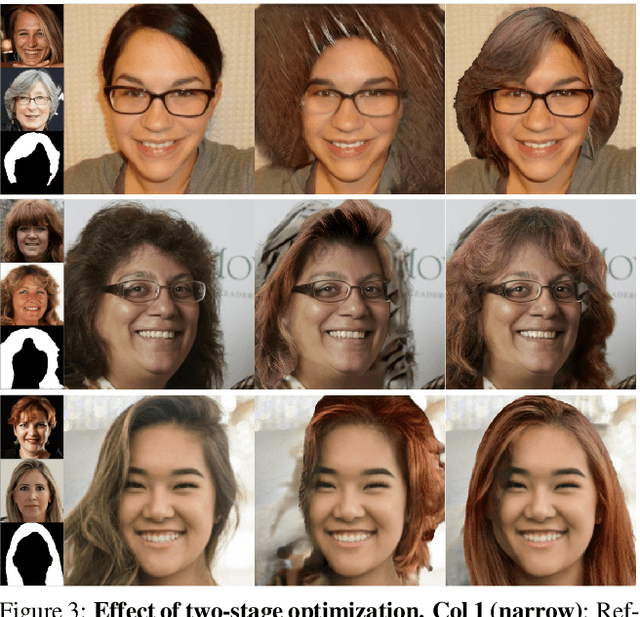
Abstract:Hairstyle transfer is challenging due to hair structure differences in the source and target hair. Therefore, we propose Latent Optimization of Hairstyles via Orthogonalization (LOHO), an optimization-based approach using GAN inversion to infill missing hair structure details in latent space during hairstyle transfer. Our approach decomposes hair into three attributes: perceptual structure, appearance, and style, and includes tailored losses to model each of these attributes independently. Furthermore, we propose two-stage optimization and gradient orthogonalization to enable disentangled latent space optimization of our hair attributes. Using LOHO for latent space manipulation, users can synthesize novel photorealistic images by manipulating hair attributes either individually or jointly, transferring the desired attributes from reference hairstyles. LOHO achieves a superior FID compared with the current state-of-the-art (SOTA) for hairstyle transfer. Additionally, LOHO preserves the subject's identity comparably well according to PSNR and SSIM when compared to SOTA image embedding pipelines. Code is available at https://github.com/dukebw/LOHO.
W-Cell-Net: Multi-frame Interpolation of Cellular Microscopy Videos
May 14, 2020



Abstract:Deep Neural Networks are increasingly used in video frame interpolation tasks such as frame rate changes as well as generating fake face videos. Our project aims to apply recent advances in Deep video interpolation to increase the temporal resolution of fluorescent microscopy time-lapse movies. To our knowledge, there is no previous work that uses Convolutional Neural Networks (CNN) to generate frames between two consecutive microscopy images. We propose a fully convolutional autoencoder network that takes as input two images and generates upto seven intermediate images. Our architecture has two encoders each with a skip connection to a single decoder. We evaluate the performance of several variants of our model that differ in network architecture and loss function. Our best model out-performs state of the art video frame interpolation algorithms. We also show qualitative and quantitative comparisons with state-of-the-art video frame interpolation algorithms. We believe deep video interpolation represents a new approach to improve the time-resolution of fluorescent microscopy.
 Add to Chrome
Add to Chrome Add to Firefox
Add to Firefox Add to Edge
Add to Edge